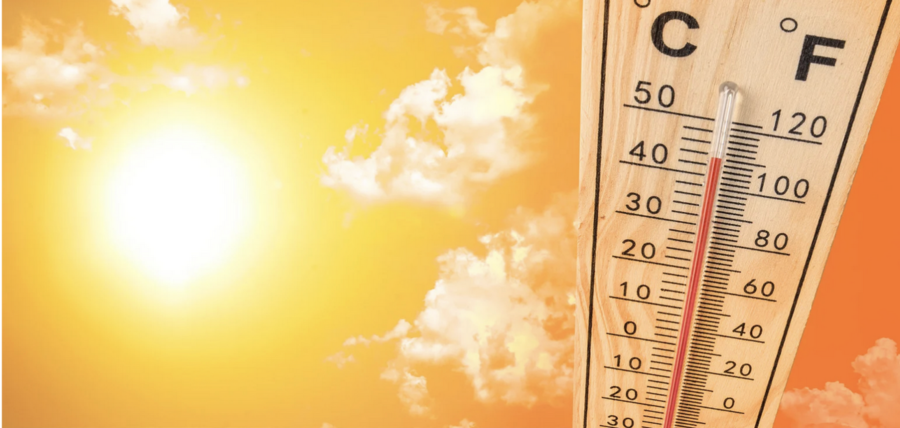Record-breaking heat waves have been making their way through the country as we move into the height of summer. Heat waves in the summer are not unusual. It is the rising frequency of extreme heat waves — and their health impacts — that are a growing concern.
According to the National Climate Assessment, the average number of heat waves that occur in major U.S. cities each year has doubled since the 1980s. Strong evidence shows that human activities are amplifying the intensity, frequency, and duration of naturally occurring weather events.
Who is the most vulnerable?
The week of June 16th, roughly 1 in 3 Americans were under an extreme heat advisory or warning. By definition, extreme heat advisories and warnings mean that individuals should take action, be aware, and be prepared for extremely dangerous heat conditions that can cause weather-related fatalities, especially for people who are at high risk.
Extreme temperatures can make many people uncomfortable, both physically and mentally. However, combining extreme temperatures with other weather conditions — such as high humidity, sun exposure, stagnant air, and poor air quality — raises serious health concerns for groups at greater risk.
These groups include, but are not limited to: children, older adults, individuals experiencing homelessness, people with pre-existing conditions (i.e., cardiovascular disease, diabetes, mental health, asthma), people with disabilities, indoor and outdoor workers, emergency responders, incarcerated people, people in low-income communities, pregnant people, athletes, and pets and service animals.
Children and athletes at risk
During the summertime, many children enjoy spending time outdoors playing structured or unstructured activities— and numerous studies have revealed the positive effects of children being outside. Yet it is also important to note that children have less efficient thermoregulators than adults, and can quickly become sick from high temperatures and extreme heat, including dehydration, heat exhaustion, heat cramps, and heat stroke.
These health concerns also apply to athletes. Athletes are at higher risk of medical emergencies due to the combination of exposure, exertion, and in some cases, an additional layer of protective gear.
For those who play and practice on artificial turf, parents should be aware of the heat hazards artificial turf can pose, such as burned skin, damaged shoes, and an increased risk of serious heat-related illnesses. For more information, see this fact sheet.
Prevention tips during extreme heat events
Staying aware and informed of preventive measures can help keep ourselves and our loved ones safe as we enjoy the summertime. The following are a few specific steps to remember:
- Limit exposure to direct sunlight (especially during the hours of high UV rays: 10 AM - 4 PM)
- Stay hydrated, wear loose and light clothing, and practice sun safety (wearing sunscreen with high SPF)
- Stay informed about heat warnings and heat advisories
- Do not leave children or animals in a parked car
- Prepare an emergency supply (medication, food, water, first-aid supplies, and copies of medical records) and lifesaving equipment
- Reduce caffeine consumption
- Consult your healthcare professional on the interaction of prescribed medications with heat exposure
- Stay connected with your local emergency manager to make them aware of your functional needs, family, and friends, especially for people over 65 years old and with a pre-existing condition, a disability, and living alone
- Store insulin properly — in a cool place with no direct sunlight
- Take shelter at temperature-controlled centers if needed
- Be cautious of the paved surfaces when bringing animals outside
Into the future
Until we regulate fossil fuel industries and other contributors to the climate crisis, we will continue to see extreme weather more frequently. Hot temperatures will become hotter, and cold temperatures will become colder. Not only that, we will also experience the direct health effects of the climate crisis impacting our livelihoods.
Today the Department of Labor’s Occupational Safety and Health Administration (OSHA) has released a proposed rule to protect workers from extreme weather. If finalized, this rule would be the first-ever federal safety standard addressing excessive heat in the workplace. Passing this proposal would be a breakthrough in addressing workers' safety in extreme weather conditions, and have a significant impact on workers and their well-being.
Bill Nye, a science educator of a popular TV show in the 90s, said it best when regarding the current heat wave, “This is a taste of the normal of the future unless we, humankind, get to work and address it.”
Explore the following resources for additional information and tips.
- Collaborative for Health and Environment (2019). Climate Change and Heat: Health effects, adaptation strategies, and the benefits of mitigation.
- Collaborative for Health and Environment (2023). Playing on Plastic: Artificial Turf Hazards and Safe Alternatives.
- Fifth National Climate Assessment (n.d.). Fifth National Climate Assessment.
- Healthy Children. (2024). Extreme Heat: Tips to keep kids safe when temperatures soar.
- National Integrated Heat Health Information System. (n.d.) Who is most at risk to extreme heat?
- White House (2024). Fact Sheet: President Biden announces new actions to protect workers and communities from extreme weather.
- World Health Organization (2024). Heat and health.


